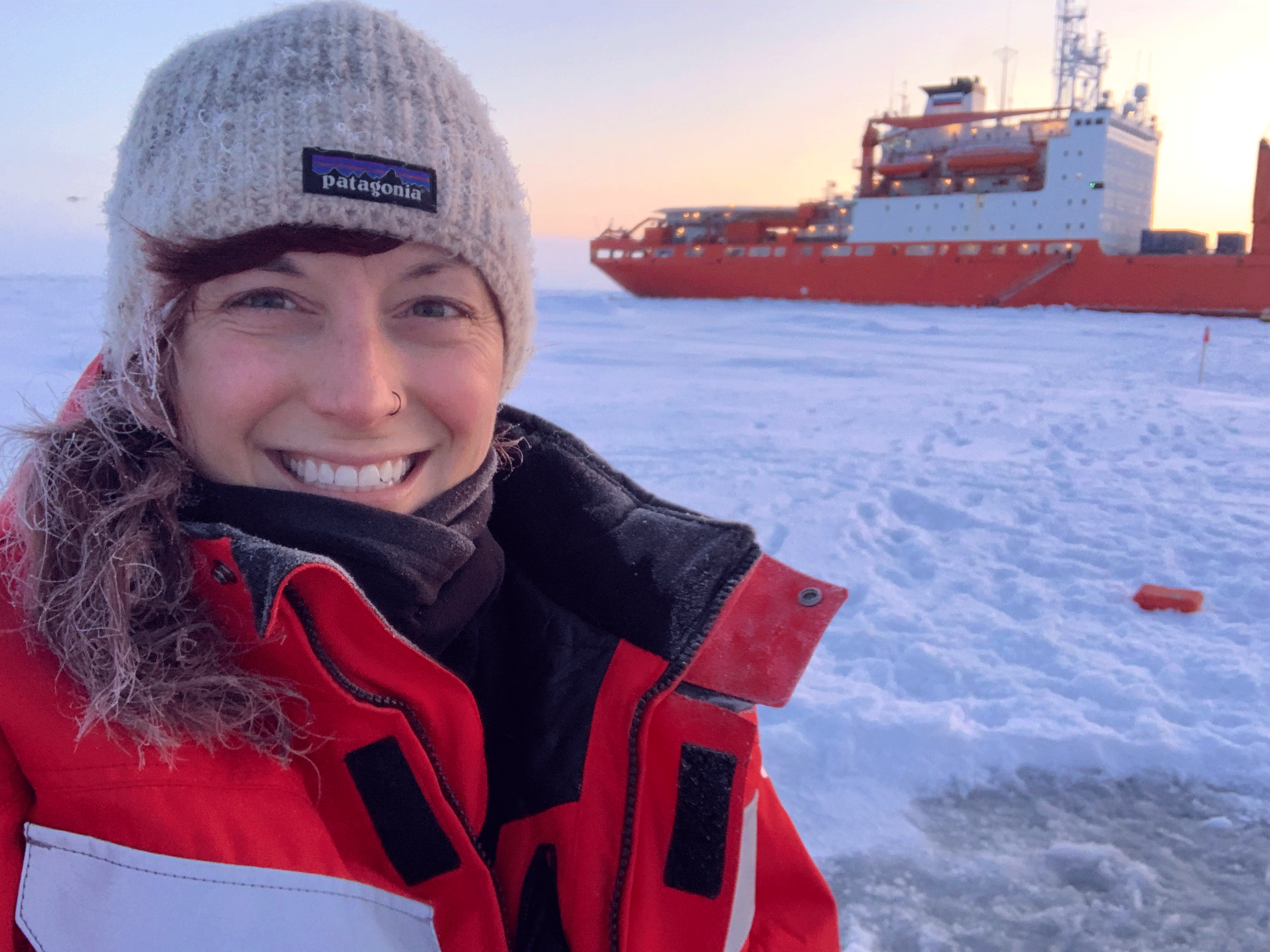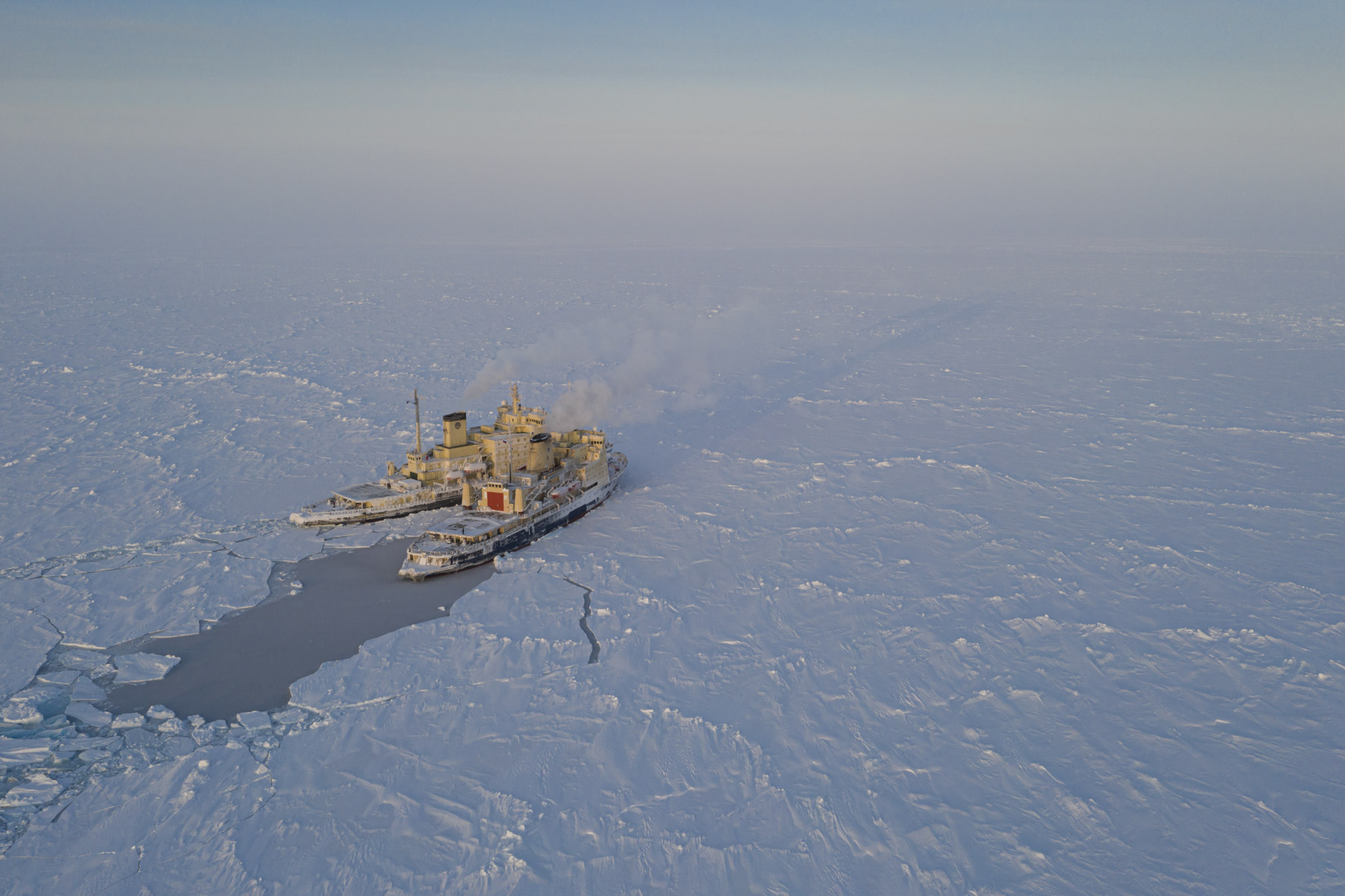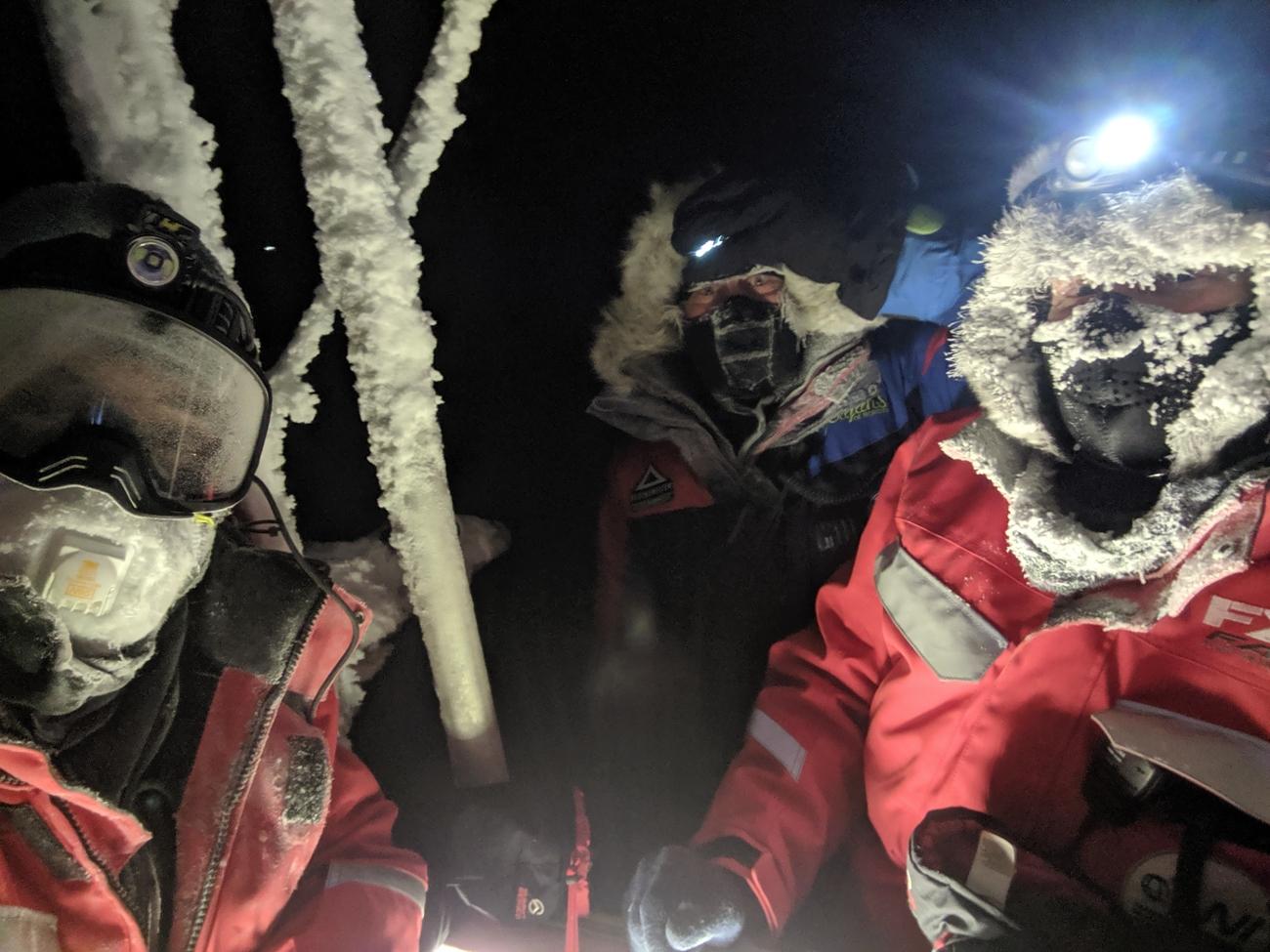AGU Scoop: A Blizzard of Posters on MOSAiC Research
Published: 16 December 2020
Editor’s note: December 14 at the 2020 American Geophysical Union (AGU) Fall Meeting featured the following posters related to the Multidisciplinary Drifting Observatory for the Study of Arctic Climate (MOSAiC) expedition. For meeting-specific links, use your AGU login to view.
The Arctic’s Ice-Nucleating Particles

Clouds play a critical role in the Arctic by regulating how much energy reaches sea ice and snow surfaces. But just how broad the effects of clouds are is―well, cloudy. In part, that’s because is so little information on arctic aerosols―tiny atmospheric particles―that are the seeds of cloud particle formation.
Jessie Creamean, an atmospheric scientist at Colorado State University, was one of many aerosol researchers who rushed to participate in MOSAiC. In the bow of the mother ship, the R/V Polarstern, ARM emplaced its second mobile facility. Included was an Aerosol Observing System used to measure the properties of atmospheric particles and trace gases.
Creamean, who also used university instrumentation, has a special interest: ice-nucleating particles (INPs). Swept into the atmosphere, they trigger the freezing of supercooled cloud droplets and influence cloud reflectivity and life span. Creamean and three Colorado State co-authors presented an AGU poster outlining their attempts during MOSAiC to evaluate INPs and their sources in the central Arctic.
In the related abstract, Creamean and the others called arctic INPs “vastly understudied” before MOSAiC. Now, for the first time, scientists have a year’s worth of arctic INP data, as well as some first-time INP data from the central Arctic.
Getting that data is challenging. As in the atmosphere at large, INPs are rare. On some days in the central Arctic, there were none to be found, especially in December and January.
The paper and poster present preliminary results from their experiments, the fruit of a wide range of aerosol, seawater, sea-ice core, and snow samples. A portion of the samples is being DNA-sequenced to tease out the nature of biological INPs. (Some INPs are minerals.)
The authors lay out case studies too. One is on INP populations during winter storms. Another looks at INPs when open water is exposed in melt ponds and arctic leads―fissures in the ice.
The big goal, said Creamean, is to get a picture of INP abundance and sources (including biological) during a full sea-ice cycle. Once they do that, the answer to an old question is closer: How do INPs modulate cloud-ice formation in the central Arctic?
Creamean was aboard the Polarstern for Leg 1 of the expedition.
‘Leaving Earth’ to Study Aerosols

Ivo Beck, a PhD student at the Swiss Federal Institute of Technology, joked that departing for the central Arctic in late October 2019 was like “leaving Earth.” He said so in a blog co-written with a colleague―a colorful arctic first-timer’s look at MOSAiC.
Beck was on Leg 2 of the expedition, which plunged him and his shipmates into the polar night. His focus aboard the Polarstern was aerosol number concentration, the subject of an AGU poster that he led.
In the Arctic, aerosols influence earth systems directly by absorbing and scattering sunlight―and indirectly by influencing cloud radiative properties. But cloud-aerosol interactions in the region are poorly understood, especially in the dark season. This makes simulations of arctic clouds uncertain, along with their effects on regional climate.
For MOSAiC, ARM provided a suite of devices for measuring aerosols. Beck focused on his own laboratory container, with 17 instruments and sensors, on the bow of the Polarstern.
In their abstract, Beck and his colleagues focus on aerosol number concentration by way of size distribution and microphysical processes. It was one pathway to understanding how aerosols evolve during the winter. They gathered insights into local sources of aerosols, such as blowing snow, and compared them with long-range transport influences that form haze in the Arctic.
Among their preliminary results, researchers saw a continuous increase in background particle concentrations as spring approached, bringing with it a buildup of arctic haze.
Importantly, Beck and his co-authors―from Switzerland, Finland, and Germany―compared their central Arctic results with conditions recorded by observatories in lower latitudes of the Arctic.
They also evaluated different techniques, including machine learning, for identifying and masking aerosol contamination from sources such as ship exhaust and snowmobiles. Beck and others continue to develop what they call their “pollution mask” to minimize false positives in aerosol data.
The Structure and Impact of Arctic Cyclones

MOSAiC afforded scientists a unique all-season view of arctic cyclones. During MOSAiC, 20 such cyclones swept through the expedition’s observational domain, which extended up to 50 kilometers (31 miles) beyond the Polarstern.
On hand to observe some of those storms, at both MOSAiC’s beginning (Leg 1) and end (Leg 5), was veteran polar scientist Ola Persson of the Cooperative Institute for Research in Environmental Sciences. He was one of the original instigators of MOSAiC and an advocate for using an ARM Mobile Facility. During the expedition, he was on teams linked to investigations of the atmosphere, modeling, sea ice, and remote sensing.
At AGU2020, Persson led a list of authors on a poster outlining preliminary MOSAiC results on the structure and evolution of arctic cyclones. These storms affect sea ice thermodynamically as well as kinetically, causing the violent churning of the seas.
Persson and his co-authors noted that MOSAiC was a rare opportunity to observe arctic cyclones in an entire annual cycle, from freeze-in to melt. Persson and others, sometimes using instruments arrayed on 600-pound sleds, sampled the atmospheric structure with high-frequency rawinsondes (a balloon-borne technique to measure wind speed and direction) and on-ice radiation, turbulence, and basic meteorological measurements. The researchers also relied on ARM’s ship-based cloud radar and a radar wind profiler.
They observed surface impacts by way of surface energy budget measurements, precipitation gauges, ice radar, synthetic-aperture radar imagery to reconstruct landscapes, and an array of GPS buoys. They estimated synoptic-scale spatial structure 5,000 kilometers (3,100 miles) wide by way of validated reanalysis data and satellite imagery.
Their preliminary work examines several cyclone cases.
–Contributions from ARM science writer Corydon Ireland
Planning your AGU schedule? Get more information about ARM-focused AGU presentations.
Keep up with the Atmospheric Observer
Updates on ARM news, events, and opportunities delivered to your inbox
ARM User Profile
ARM welcomes users from all institutions and nations. A free ARM user account is needed to access ARM data.


















